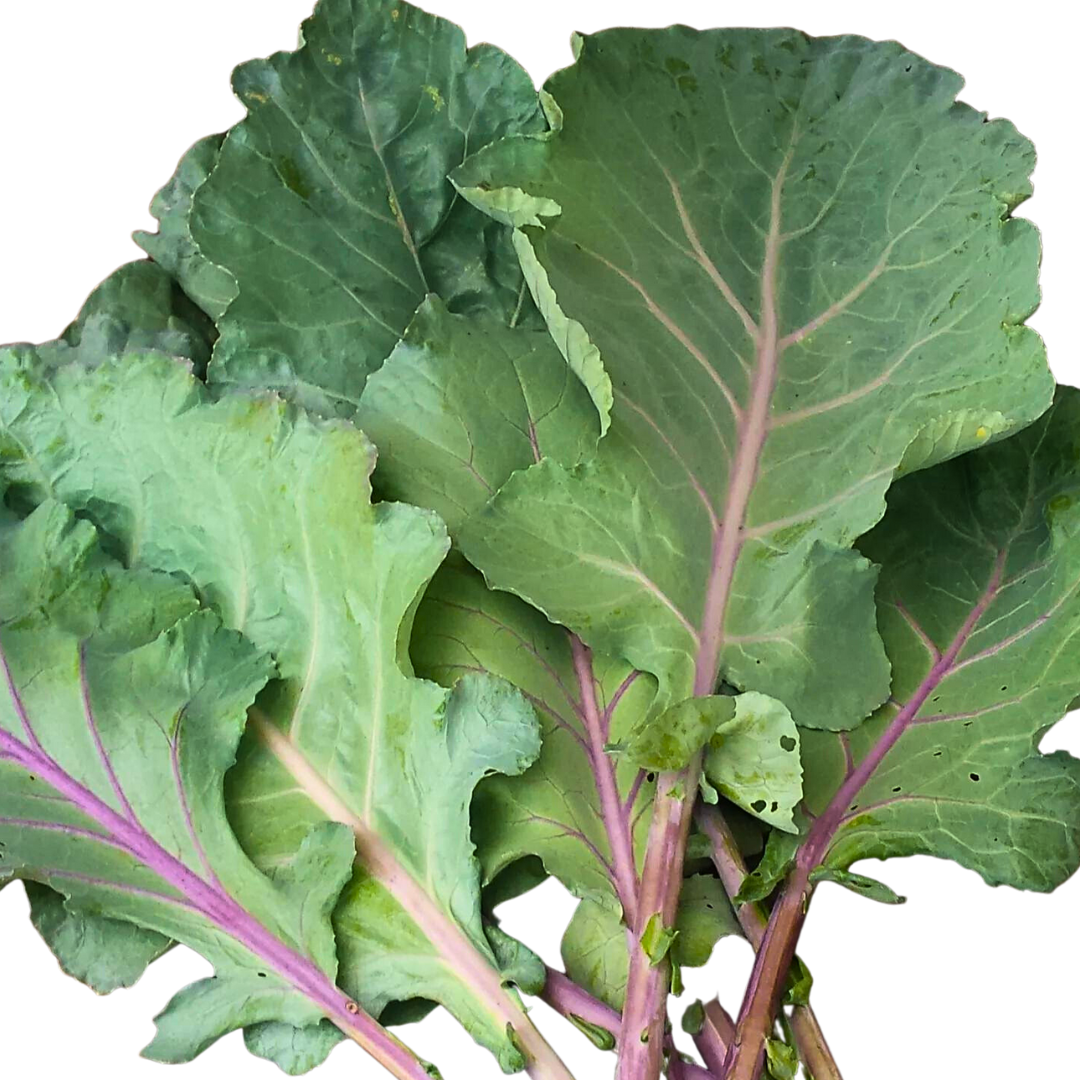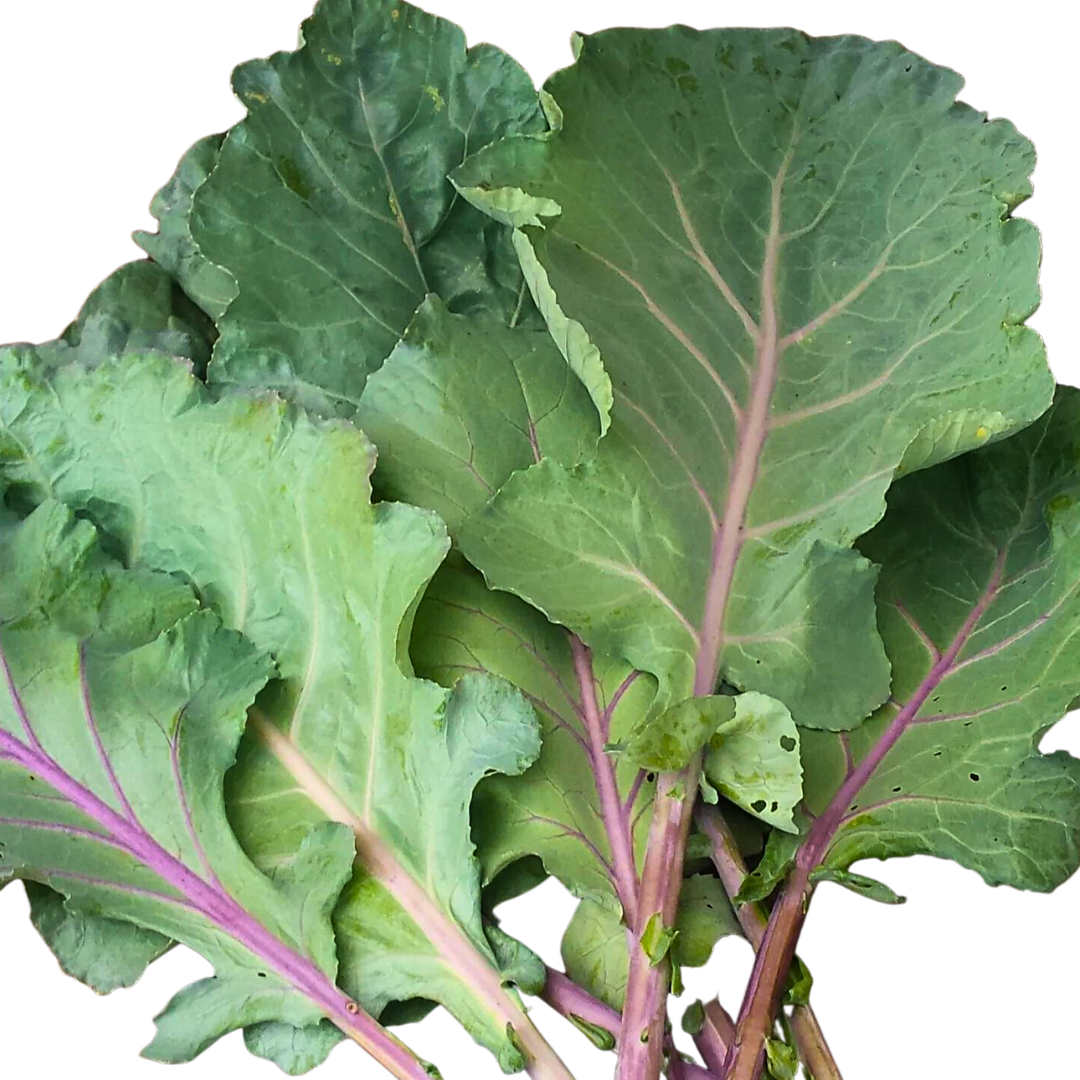Old Timey Blue Collard Seed
Old Timey Blue Collard Seed
Couldn't load pickup availability
Seed Type
Seed Type
Open Pollinated (Untreated)
Seeds Per Pack
Seeds Per Pack
100
Days to Maturity
Days to Maturity
60
Disease Resistance
Disease Resistance

Why Grow Old Time Blue Collard?
Delicious Heirloom Collards Old Timey Blue Collard is an heirloom collard variety that was originally sent to us by a grower in Texas. These collards have a purple vein and blue-green leaves, which is where they get their name. The leaves grow abundantly on the plants and can get as large as 2' tall.
Tender and Sweet Collards are generally cold-tolerant, but this Old Timey Blue Collard variety is reported to be heat-tolerant as well. Plant these in the fall or late winter and enjoy repeated harvests for many months. The leaves can be cooked in a pot like traditional collards with neck bone, ham hock, or your meat of choice. This variety is also especially tasty when sliced thin and used as a salad green.
Old Timey Blue Collard Growing Tips
• When to Plant Collard Greens
Collards are considered a "cool season" vegetable that grows best in the fall and early spring months. Although this variety will often make it well into the summer months without bolting, the best performance and production will come during the cooler months.
Collards can be directly sewn or transplanted in the backyard garden, although we prefer transplanting this variety. Plant seeds indoors or in a greenhouse 4-6 weeks before your intended in-ground planting date.
Collard transplants should be planted outdoors once they have a well-established root ball in their seed starting containers. Aim to put your transplants in the ground in the late summer months for a fall planting or in the late winter months for a spring planting.
Collards are extremely cold-tolerant and will grow well throughout the winter in the southern states. For gardeners in the middle or northern states, frost protection would be needed to grow them through the winter. Or you can opt for a late winter planting as temperatures are warming going into spring.
When transplanting collard plants, space them approximately 1' apart along rows or in your containers or raised beds. If directly sewing them into your garden, you can plant seeds a few inches apart and thin later. Some growers prefer to plant them thick and harvest as baby greens, while other growers prefer a full sized plant that will require 1' of space.
• How to Fertilize Collard Greens
It's always a good idea to apply some pre-plant fertilizer to the soil prior to planting collard transplants. We like to sprinkle Coop Gro organic fertilizer on our raised beds or along our rows prior to planting. This ensures the plants have the right nutrients to put down roots in their new soil.
Because collard plants are usually in your garden for several months (if not 7-8), they'll need repeated applications of fertilizer for solid production. We like to feed ours every 3-4 weeks with a liquid solution of AgroThrive General Purpose or by sprinkling Coop Gro around the base of the plants and lightly mixing it into the soil.
• When to Harvest Collard Greens
Collard greens can be harvested whenever you'd like! Some gardeners like to harvest "baby collard greens" as soon as the leaves are as big as their hands, while others prefer to wait until the leaves get larger.
When harvesting, be sure to leave 3-4 leaves on the top of the plant so it can continue to grow. Harvest the lower leaves as the plant grows and leave the top leaves for continual production throughout the cool season.

